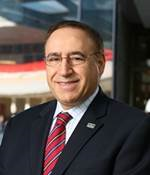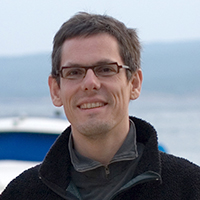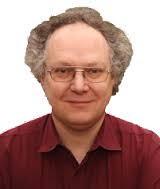- Home
- Objective
- Keynote Speakers
Mohamad Sawan Canada Research Chair in Smart Medical Devices Polystim Neurotechnologies Laboratory Polytechnique Montreal, Canada
Prof. Mohamad Sawan
Fabrice Wendling (PhD) holds a position of Director of Research at INSERM

Prof. fabrice Wendling
Metin Akay is currently the founding chair of the new Biomedical Engineering Department and the John S. Dunn professor of biomedical engineering at the University of Houston

Prof. Miten AKAY
Bart Bijnens

Prof. Bart Bijnens
ICREA Research Professor in the Department of Information and Communication Technologies at Universitat Pompeu Fabra (UPF)
Patrick Flandrin

Prof. Patrick Flandrin
CNRS "Research Director" at École normale supérieure de Lyon
Ghaleb Husseini Professor- AUS Chemical Eng. Department, Sharjah, UAE
 Prof. Ghaleb Husseini
Prof. Ghaleb Husseini
Peter Stadler Algorithms, Computing in Mathematics, Natural Science, Engineering and Medicine, Bioinformatics University of Leipzig ,
 Prof. Peter Stadler
Prof. Peter Stadler- Invited Speakers
- Partner Universities
- Lebanese University, LU, LB
- Saint Joseph University, USJ, LB
- Notre Dame University, NDU, LB
- Rafic Hariri University, RHU, LB
- Islamic Univ. of Lebanon,IUL, LB
- Saint Esprit of Kaslic Univ. USEK, LB
- More...
- Modality and submission
Paper presentation and submission

The conference will consist of oral presentations of fifteen minutes with few plenary sessions. All submitted papers will be peer reviewed. Accepted papers will be published as a collective work in an electronic format and will be submitted for inclusion to IEEE Xplore
 Sofiane Boudaoud
Sofiane BoudaoudPhD degree in automatic and signal processing from the University of Nice-Sophia Antipolis, France
Title: Functional Data Analysis of Electrophysiological Signals
Abstract:
On the last decade, with the development of specific methods devoted to Functional Data Analysis (FDA), the registration problem'' for time variability analysis of a set of curves has attracted increasing interest (Ramsay, 2002). Since the pioneering work of Gasser and Kneip (Gasser 1995), several approaches for curves realignment have been proposed in recent years. However, the classical formalism for curve registration imposed a restricted shape dispersion among samples. Whereby, time warping transformations are increasing functions. As a result, shape dispersion from the reference curve is constrained to verify specific event (or landmark) chronology or structure (succession of landmarks). Recently, new approaches have been proposed that deal with ``true'' shape heterogeneity among curves using convex averaging (Liu, 2004) and Core Shape Modelling (CSM) (Boudaoud, 2010). This last semi-parametric formalism allows a direct access to intrinsic shape functions after polynomial warping at the normalized integral level.
In biomedical applications, the objective of these approaches is to estimate a biological, often nonlinear, time variability, present in a set of curves and eliminate it in order to access to the amplitude variability and shape variability. This operation allows the identification of hidden pathological variability in the observed variability.
Especially for electrophysiological data, characterizing these kinds of variability is relevant for assessing the underlying electrical propagation processes. This shape analysis can be performed using the CSM formalism since it provides us with shape distance and shape average curve for evaluating the shape dispersion of a sample of curves (Boudaoud, 2010). Thus, curve shapes, extracted from ECG, Auditory Evoked Potential or sEMG signals can be classified according to several physiological contexts.In this talk, after recalling the CSM formalism, a review of recent applications in characterizing several data from electrocardiography (Boudaoud, 2007), audiology (Boudaoud, 2010), and electromyography (Ayachi 2014, Boudaoud 2014) will be presented and discussed focusing on the benefits of using functional data analysis to extract relevant physiological information in complement to classical statistical approaches.
Biography:
Sofiane Boudaoud received the MSc and the Magister degree in electrical engineering from the A. Mira University of Béjaïa and the F. Abbas University of Sétif, Algeria, in 1998 and 2001, respectively. Then, he received the MSc. and the PhD degree in automatic and signal processing from the University of Nice-Sophia Antipolis, France, in 2002 and 2006, respectively. Since 2007, he is working as Associate Professor at the University of Technology of Compiègne (UTC), France, and as researcher at the Biomechanics and Bioengineering (BMBI) laboratory. In the end of 2014, he obtained the “Habilitation à diriger les recherches” degree from the university of technology of Compiègne.
His research interests are in electrophysiological signal processing and modelling applied to assess the neuromuscular system. His concerns are with studying the motor control scheme and the generation of muscular force by analysing surface HD-sEMG signals thanks to multichannel signal processing and statistical methods and models developed in the team. Another application field is the study of uterine EMG signals in order to monitor pregnancy and detect preterm labour. He participated in more than 30 peer-reviewed publications in signal processing and biomedical engineering. Actually, he co-animates a transversal research axe “SYNEMUS” at BMBI lab. devoted to the analysis and modelling of the neuromusculoskeletal system.
- Keynote Speakers









 Mohamad Sawan
Mohamad Sawan